Today’s Current Affairs: 22nd Apr 2023 for UPSC IAS exams, State PSC exams, SSC CGL, State SSC, RRB, Railways, Banking Exam & IBPS, etc
Table of Contents
Garbh-Ini Programme:

The Indian scientists working in the Garbh-Ini programme have identified 19 single nucleotide polymorphisms (SNPs), or genetic markers, that are associated with preterm or premature birth.
- Garbh-Ini programme promotes Maternal and Child Health and develops prediction tools for preterm birth.
- Garbh-Ini is a cohort study of pregnant women initiated in May 2015 at the civil hospital in Gurugram, Haryana, India.
- It is an initiative under the Department of Biotechnology of the Union Ministry of Science and Technology as a collaborative interdisciplinary programme.
- This program is led by the Translational Health Science and Technology Institute (THSTI), NCR Biotech cluster, Faridabad.
- It is part of the Atal Jai Anusandhan Biotech Mission – Undertaking Nationally Relevant Technology Innovation (UNaTI).
Single nucleotide polymorphism (SNP):
- It is the most common type of genetic variation among people.
- Each SNP represents a difference in a single DNA building block, called a nucleotide.
- For example, an SNP may replace the nucleotide cytosine (C) with the nucleotide thymine (T) in a certain stretch of DNA.
- Most commonly these are found in the DNA between genes.
Audit Quality Maturity Model (AQMM):

The Institute of Chartered Accountants of India (ICAI) recently launched the Audit Quality Maturity Model (AQMM) with the aim of enhancing the quality of audits and improving transparency.
- Audit Quality Maturity Model (AQMM) is a tool for the self-evaluation of audit firms & sole proprietors towards technologically driven mechanisms to increase operational efficiency.
- AQMM is an amalgamation of a well-researched set of Audit Quality Indicators (AQIs).
- It includes operations of the firm, viz. revenue budgeting and pricing, audit practice manual, budgeting of engagements, timesheet, use of technology adoption, quality control for engagements, Human Resource Management including resource planning and monitoring, performance evaluation and compensation, physical and IT infrastructure.
- The AQMM model is structured into 3 sections with a total score of 600 points,
- Practice Management (Operation);
- Human Resource Management;
- Practice Management -Strategic/Functional;
- Based on the score(s) obtained under each of the sections, the firm shall arrive at a level ranging from Level 1 to 4.
- While Level 1 depicts that the firm is very nascent, Level 4 indicates that the firm has made significant adoption of standards and procedures.
Institute of Chartered Accountants of India (ICAI):
- It is a statutory body established by an Act of Parliament, viz. The Chartered Accountants Act, 1949.
- Mandate: Regulating the profession of Chartered Accountancy in the country; Formulation of Accounting Standards; and Prescription of Standard Auditing Procedures.
- It functions under the administrative control of the Ministry of Corporate Affairs, Government of India.
Global Unicorn Index:
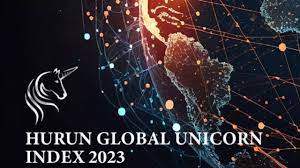
After the United States and China, India has retained the third-highest number of unicorns in the world.
- Report was Published by Hurun Report on Global Unicorn
Findings:
- India, with 68 unicorns has added 14 new unicorns since the pandemic began and stands behind USA (666) and China (316)
- Top-most unicorn in India: BYJU’s ($22 billion); Swiggy and Dream11 (both at $8 billion)
- Offshore unicorn: India (70) has more than China (32) and both countries produce more offshore unicorns than any other country
HURUN:
- It is a research, media and investments business, best known for its Hurun Rich List, a ranking of the wealthiest individuals in China
Financial Grants For Biomass Pellet Manufacturing Unit:
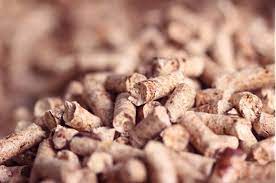
The Central Pollution Control Board (CPCB) revised the financial grants for biomass pellet manufacturing units.
- Biomass pellets are a type of renewable fuel made from organic materials such as wood, agricultural residues, and energy crops.
- These are produced by compressing organic materials under high pressure.
- The compression process removes the moisture content and increases the energy density of the biomass.
- It is mandatory in India to use biomass or agricultural residue as combustion fuel along with coal in coal-fired thermal power plants.
- The biomass used for co-combustion in the power plants is processed and refined into pellets with a calorific value comparable to coal.
- These are two kinds
- Torrefied: It is processed at 250-350°C in the absence of oxygen, leading to the formation of torrefied biomass.
- Non-torrefied: In this biomass is shredded, grinded and sent to a pellet reactor, where it is compressed into pellet form with the help of binders such as sawdust, bagasse, molasses, starch and others.
Central Pollution Control Board:
- It is a statutory body under the Ministry of Environment, Forest and Climate Change.
- It was constituted under the Water (Prevention and Control of Pollution) Act, 1974.
- It is entrusted with the powers and functions under the Air (Prevention and Control of Pollution) Act, 1981.
- It serves as a field formation and also provides technical services to the Ministry of Environment and Forests of the provisions of the Environment (Protection) Act, 1986.
Civil Services Day 2023:

National Civil Service Day, observed on April 21 every year, is a celebration of the idea of national civil service.
- The first National Civil Services Day was celebrated on April 21, 2006.
- It ensure the implementation of government policies, ensuring the passage of benefits to the people.
- The civil services in India consist of the
- Indian Administrative Service (IAS)
- Indian Police Service (IPS)
- Indian Foreign Service (IFS) and
- A comprehensive list of other Central Services (Group A, B)
- It commemorates the day when Sardar Vallabhbhai Patel – independent India’s first Home Minister, inaugurated the newly-created Indian Administrative Service in 1947, calling them the “steel frame of India.”
First Waterbodies Census:

The Ministry of Jal Shakti recently released the report of its first-ever census of water bodies, revealing crucial insights into the country’s water resources.
- The census provides an extensive inventory of water sources in India, highlighting disparities between rural and urban areas and varying levels of encroachment.
- The census of waterbodies was conducted in conjunction with the 6th Minor Irrigation Census for 2017-18.
- It defines a waterbody as “all-natural or man-made units bounded on all sides with some or no masonry work used for storing water for irrigation or other purposes.”
- The census aimed to provide an inventory of India’s water resources, including natural and man-made water bodies like ponds, tanks, lakes, and more, and to collect data on the encroachment of water bodies.
- The census enumerated a total of 24,24,540 water bodies across the country, with West Bengal accounting for the most (7.47 lakh) and Sikkim the least (134).
- West Bengal has the highest number of ponds and reservoirs
- The top district in terms of waterbodies is South 24 Parganas in West Bengal.
- Andhra Pradesh has the highest number of tanks
- Tamil Nadu has the highest number of lakes
- Maharashtra leads in water conservation schemes
- The report highlights that 97.1% of the waterbodies are in rural areas, with only 2.9% in urban areas.
- Most of the waterbodies are ponds, followed by tanks, reservoirs, water conservation schemes, percolation tanks, check dams, lakes, and others.
- The census also collected data on the encroachment of waterbodies for the first time, revealing that 1.6% of all enumerated waterbodies are encroached, with 95.4% of encroachments in rural areas and the remaining 4.6% in urban areas.
- A significant percentage of encroachments cover more than 75% of the waterbody’s area.
Coal Mining Project In Chhattisgarh : Protest
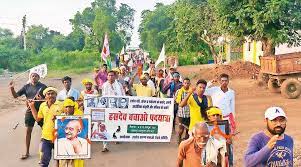
The Adani Enterprises Limited (AEL) coal mining project in Chhattisgarh has sparked a controversy due to its impact on the environment and local communities.
- AEL has been mining coal in the Parsa East and Kente Basan coal blocks of Chhattisgarh’s Surguja district for over a decade now.
- For more than a year now, locals, largely from the Gond tribe, in Hariharpur, Ghatbarra, and Fattepur villages of Chhattisgarh, have been holding a sit-in at the entrance to Hariharpur against mining.
- The mining project has adversely affected the lives of locals. As the mine has consumed forest land.
- ‘Save Hasdeo Campaign’ is also being run to save the forests of Hasdeo.
- The mines have destroyed grazing land for cattle, affected the groundwater level, and the blasting has loosened the earth around borewells, and tube wells people had been using for minor farming.
- The stream next to Hariharpur, once used to have water and fish throughout the year, has turned into a muddy stream since the digging has affected the catchment area.
8th India-Thailand Defence Dialogue:
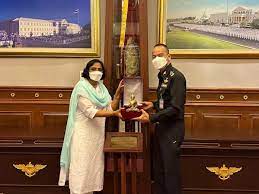
The 8th India-Thailand Defence Dialogue was held in Bangkok, Thailand, during which both sides expressed satisfaction at the ongoing bilateral defense cooperation.
Highlights of the Dialogue:
- The progress on various bilateral defence cooperation initiatives was reviewed.
- The co-chairs identified means to enhance existing areas of collaboration, especially in the field of defence industry, maritime security and multinational cooperation.
- Thailand expressed confidence in the capability of the Indian defence industry.
- The two chairs also articulated steps in the direction of emerging areas of cooperation and issues pertaining to global commons.
Bhoodan-Gramdan Movement:

A village in Maharashtra moved to the Bombay High Court, demanding the implementation of the Gramdan Act.
- Bhoodan Movement was a socio-political movement started by Vinoba Bhave in 1951 in India.
- Vinoba Bhave was a disciple of Mahatma Gandhi who chose him as the first individual Satyagrahi and had actively participated in India’s Freedom Struggle.
- After independence, he realized that the issue of landlessness was a major problem faced by rural India and in 1951, he started the Bhoodan Movement or the land gift movement.
- It aimed to persuade wealthy landowners to donate a portion of their land to landless peasants.
- The movement gained momentum when Bhave walked from village to village, requesting landowners to donate their land.
- The next phase of the Bhoodan movement was the Gramdan Movement or the village gift movement.
- It aimed to create self-sufficient villages by bringing about collective ownership of land.
- The Gramdan movement urged villagers to donate their land to a village council, which would then manage and distribute the land to the villagers.
- This movement gained support from many political leaders and was seen as a solution to the problem of unequal distribution of land in rural India.
SATHI Portal:
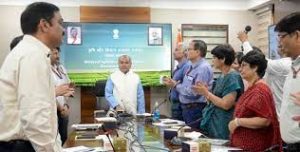
The Union Agriculture and Farmers Welfare Minister launched the SATHI Portal and Mobile App.
- The Seed Traceability, Authentication and Holistic Inventory (SATHI) portal is a Centralized Online System designed to deal with the challenges of seed production, quality seed identification and seed certification.
- It has been developed by the National Informatics Centre (NIC) in collaboration with the Union Ministry of Agriculture and Farmers Welfare on the theme of ‘Uttam Beej – Samriddh Kisan.
- There will be a QR code under this system, through which the seeds can be traced.
- It will ensure a quality assurance system, and identify the source of seed in the seed production chain.
- The system will consist of integrated 7 verticals of the seed chain – Research Organisation, Seed Certification, Seed Licensing, Seed Catalogue, Dealer to Farmer Sales, Farmer Registration and Seed DBT.
- Seeds with valid certification can only be sold by valid licensed dealers to centrally registered farmers who will receive a subsidy through DBT directly into their pre-validated bank accounts.
Global Food Policy Report 2023:
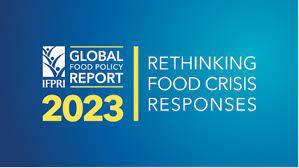
The International Food Policy Research Institute (IFPRI) published Global Food Policy Report, 2023 which said that investing in early warning systems is essential to save lives, livelihoods and money.
Highlights of the report:
- The report called for a more proactive response to food system shocks with a focus on three key areas:
- Crisis prediction and preparation
- Building resilience before and during crises
- Making crisis response supportive and inclusive of women, forced migrants and other vulnerable groups.
- It advocated for strengthening agrifood value chains to support livelihoods and food security during crises.
- It advised governments to maintain a business environment that fosters flexibility, and technical and financial innovation.
International Food Policy Research Institute (IFPRI):
- It was established in 1975 and provides research-based policy solutions to sustainably reduce poverty and end hunger and malnutrition in developing countries.
- Headquarters: Washington, D.C
- It is a research centre of CGIAR, which is the world’s largest agricultural innovation network.
Four More Biodiversity Heritage Sites:

West Bengal recently notified four more biodiversity heritage sites (BHS), taking the tally in the state to eight.
- Biodiversity Heritage Sites (BHS) are unique ecosystems having rich biodiversity comprising of any one or more of the following components:
- Richness of wild as well as domesticated species or intra-specific categories.
- High endemism.
- Presence of rare and threatened species, keystone species, and species of evolutionary significance.
- Wild ancestors of domestic/cultivated species or their varieties.
- Past pre-eminence of biological components represented by fossil beds and having significant cultural, ethical or aesthetic values and are important for the maintenance of cultural diversity, with or without a long history of human association with them.
- Under Section-37 of the Biological Diversity Act, 2002, the State Government, in consultation with local bodies, may notify areas of biodiversity importance as BHS.
- The State Government, in consultation with the Central Government, may frame rules for the management and conservation of BHS.
- The creation of BHS may not put any restriction on the prevailing practices and usages of the local communities other than those voluntarily decided by them.
- The purpose of declaring BHS is to enhance the quality of life of the local communities through the conservation of such sites.
- In 2007, the Nallur Tamarind Grove in Bengaluru, Karnataka, was designated as India’s first BHS.
United Nations Capital Development Fund : Launched a White Paper
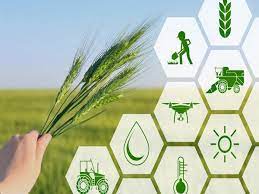
Atal Innovation Mission (AIM), NITI Aayog, and the United Nations Capital Development Fund (UNCDF) recently launched a white paper aimed at making India a global leader in agritech innovation.
- United Nations Capital Development Fund (UNCDF) is the United Nations’ flagship catalytic financing entity for the world’s 46 Least Developed Countries (LDCs).
- It is an autonomous, voluntarily funded UN organization, affiliated with the UN Development Programme (UNDP).
- The original UNCDF mandate from the UN General Assembly (UNGA) 1966 Resolution is to “assist developing countries in the development of their economies by supplementing existing sources of capital assistance by means of grants and loans”.
- The mandate was modified in 1973 to serve first and foremost but not exclusively the LDCs.
- It is the only UN agency mandated to focus primarily on the least developed countries (LDCs),
- It works to invest and catalyse capital to support to LDCs in achieving the sustainable growth and inclusiveness envisioned by the 2030 Agenda for Sustainable Development and the Doha Programme of Action for the least developed countries, 2022–2031.
- It provides investment capital and technical support to both the public and the private sectors.
Atal Innovation Mission (AIM):
- AIM is the Government of India’s flagship initiative to promote a culture of innovation and entrepreneurship in the country and was set up in 2016.
- Objective is to create and promote an ecosystem of innovation and entrepreneurship across the country at school, university, research institutions, MSME and industry levels.
- All the initiatives of AIM are currently monitored and managed systematically using real-time MIS systems and dynamic dashboards.
- Implementing Agency: NITI Aayog
Carbon Border Adjustment Mechanism : Sectoral Analysis

The Indian Government will carry out a sectoral analysis to see how the European Union’s (EU’s) proposed carbon border adjustment mechanism (CBAM) is set to affect the Indian industry
- Carbon Border Adjustment Mechanism (CBAM) is a proposed European Union (EU) tariff on carbon intensive products.
- Purpose is To put a fair price on the carbon emitted during the production of carbon intensive goods that are entering the EU , and to encourage cleaner industrial production in non-EU countries.
- The CBAM will ensure the carbon price of imports is equivalent to the carbon price of domestic production.
- If implemented as planned, EU importers will have to buy carbon certificatescorresponding to the carbon price that would have been paid in the EU, if the goods had been produced locally.
- The price of the certificates would be calculated according to the auction prices in the EU carbon credit market.
- The amount of certificates required would be defined yearly by the quantity of goods and the embedded emissions in those goods imported into the EU.
- Companies in countries with a domestic carbon pricing regime equivalent to the EU’s will be able to export to the EU without buying CBAM certificates.
- CBAM will initially cover several specific products in some of the most carbon-intensive sectors at risk of “carbon leakage”: iron and steel (including some downstream products such as nuts and bolts), cement, fertilizers, aluminium, electricity and hydrogen.




